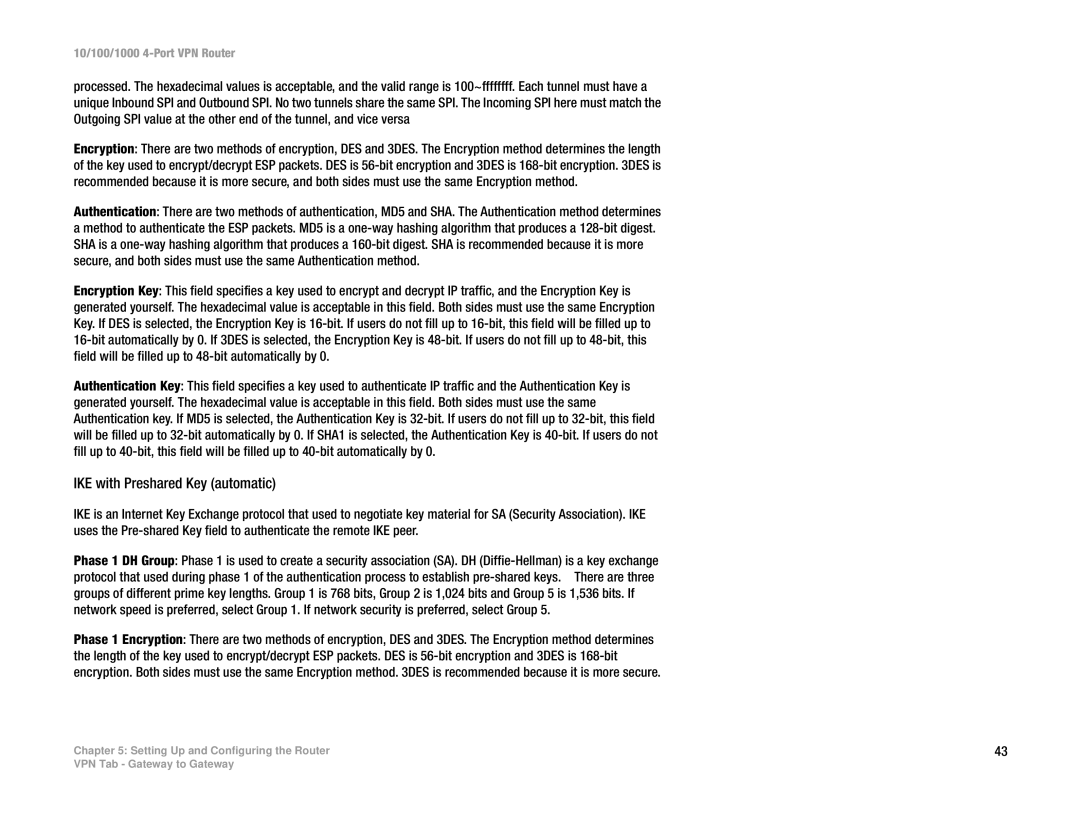10/100/1000 4-Port VPN Router
processed. The hexadecimal values is acceptable, and the valid range is 100~ffffffff. Each tunnel must have a unique Inbound SPI and Outbound SPI. No two tunnels share the same SPI. The Incoming SPI here must match the Outgoing SPI value at the other end of the tunnel, and vice versa
Encryption: There are two methods of encryption, DES and 3DES. The Encryption method determines the length of the key used to encrypt/decrypt ESP packets. DES is
Authentication: There are two methods of authentication, MD5 and SHA. The Authentication method determines a method to authenticate the ESP packets. MD5 is a
Encryption Key: This field specifies a key used to encrypt and decrypt IP traffic, and the Encryption Key is generated yourself. The hexadecimal value is acceptable in this field. Both sides must use the same Encryption Key. If DES is selected, the Encryption Key is
Authentication Key: This field specifies a key used to authenticate IP traffic and the Authentication Key is generated yourself. The hexadecimal value is acceptable in this field. Both sides must use the same Authentication key. If MD5 is selected, the Authentication Key is
IKE with Preshared Key (automatic)
IKE is an Internet Key Exchange protocol that used to negotiate key material for SA (Security Association). IKE uses the
Phase 1 DH Group: Phase 1 is used to create a security association (SA). DH
Phase 1 Encryption: There are two methods of encryption, DES and 3DES. The Encryption method determines the length of the key used to encrypt/decrypt ESP packets. DES is
Chapter 5: Setting Up and Configuring the Router | 43 |
VPN Tab - Gateway to Gateway
